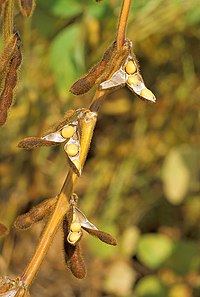
Sensor-based Evaluation of Maize (Zea mays) and Weed Response to Postemergence Herbicide Applications of Isoxaflutole and Cyprosulfamide Applied as Crop Seed Treatment or Herbicide Mixing Partner.
Sign Up to like & getrecommendations! Published in 2019 at "Pest management science"
DOI: 10.1002/ps.5715
Abstract: BACKGROUND Some maize post-emergence herbicides obtain their crop/weed se- lectivity only through the use of chemical crop safeners. Safeners improve the tolerance of maize to herbicidal active ingredients. In order to investigate the crop response… read more here.
Keywords: seed; maize; herbicide; seed treatment ... See more keywords

Insecticide seed treatment against corn leafhopper: helping protect grain yield in critical plant growth stages.
Sign Up to like & getrecommendations! Published in 2021 at "Pest management science"
DOI: 10.1002/ps.6766
Abstract: BACKGROUND The corn leafhopper, Dalbulus maidis (Hemiptera: Cicadellidae), spreads maize stunt pathogens and requires timely and effective crop protection. We determined the interaction between maize phenology and the vector feeding/infection period by stunt pathogens with… read more here.
Keywords: growth stages; seed; corn; seed treatment ... See more keywords

Seed treatment with chlorantraniliprole and carbaryl mixture for managing fall armyworm on maize: systemic synergism, control efficiency and synergistic mechanism.
Sign Up to like & getrecommendations! Published in 2022 at "Pest management science"
DOI: 10.1002/ps.7215
Abstract: BACKGROUND Fall armyworm (Spodoptera frugiperda) is one of the major invasive pests in China, and has been widely controlled by labor-intensive foliar sprays of agrochemicals in maize (Zea mays L.). RESULTS Systemic bioassay showed that… read more here.
Keywords: fall armyworm; seed treatment; control; chlor ... See more keywords

Long-term effects of chlorantraniliprole reduced risk insecticide applied as seed treatment on lady beetle Harmonia axyridis (Coleoptera: Coccinellidae).
Sign Up to like & getrecommendations! Published in 2019 at "Chemosphere"
DOI: 10.1016/j.chemosphere.2018.12.058
Abstract: Chlorantraniliprole (CAP) is a reduced risk insecticide, which used as seed treatment in many crops. However, CAP residues can contaminate pollen and nectar, becoming a potential risk to beneficial arthropods. The aims of this study… read more here.
Keywords: seed; risk; treatment; axyridis ... See more keywords

Cyantraniliprole: A new insecticidal seed treatment for U.S. rice
Sign Up to like & getrecommendations! Published in 2021 at "Crop Protection"
DOI: 10.1016/j.cropro.2020.105410
Abstract: Abstract Current pest management practices for the rice water weevil (Lissorhoptrus oryzophilus Kuschel) and the Mexican rice borer (Eoreuma loftini Dyar) in U.S. rice rely heavily on a small number of insecticides. Thus, additional products… read more here.
Keywords: seed; rice; seed treatment; insecticidal seed ... See more keywords

Anthraquinone repellent seed treatment on corn reduces feeding by wild pigs
Sign Up to like & getrecommendations! Published in 2021 at "Crop Protection"
DOI: 10.1016/j.cropro.2021.105570
Abstract: Abstract Wild pigs (Sus scrofa) are a destructive invasive species that cause extensive damage to agriculture throughout many regions of the world. In particular wild pigs damage corn more than any other crop, and most… read more here.
Keywords: anthraquinone repellent; seed treatment; repellent seed; corn ... See more keywords

Influence of a thiamethoxam seed treatment on acetolactate synthase–inhibiting herbicide–induced injury to inbred and hybrid imidazolinone-resistant rice
Sign Up to like & getrecommendations! Published in 2019 at "Weed Technology"
DOI: 10.1017/wet.2019.1
Abstract: Abstract The increased use of insecticide seed treatments in rice has raised many questions about the potential benefits of these products. In 2014 and 2015, a field experiment was conducted near Stuttgart and Lonoke, AR,… read more here.
Keywords: seed; rice; herbicide; seed treatment ... See more keywords

Enhancement of soybean nodulation by seed treatment with non–thermal plasmas
Sign Up to like & getrecommendations! Published in 2020 at "Scientific Reports"
DOI: 10.1038/s41598-020-61913-3
Abstract: Soybean ( Glycine max (L.) Merrill) is one of the most important crops worldwide providing dietary protein and vegetable oil. Most of the nitrogen required by the crop is supplied through biological N 2 fixation.… read more here.
Keywords: seed treatment; seed; soybean nodulation; non thermal ... See more keywords

Role of Tillage, Thiamethoxam Seed Treatment, and Foliar Insecticide Application for Management of Thrips (Thysanoptera: Thripidae) in Seedling Cotton
Sign Up to like & getrecommendations! Published in 2018 at "Journal of Economic Entomology"
DOI: 10.1093/jee/toy320
Abstract: Abstract Thrips are early-season pests of cotton and can cause yield and stand losses if not managed. Strip tillage into a winter cover crop, use of a neonicotinoid seed treatment, and foliar insecticide applications are… read more here.
Keywords: seed; cotton; insecticide application; seed treatment ... See more keywords

Reduction of Pythium Damping-off in Soybean by Biocontrol Seed Treatment.
Sign Up to like & getrecommendations! Published in 2022 at "Plant disease"
DOI: 10.1094/pdis-06-21-1313-re
Abstract: Pythium spp. is one of the major groups of pathogens that cause seedling diseases on soybean, leading to both pre- and post-emergence damping-off and root rot. More than 100 species have been identified within this… read more here.
Keywords: seed treatment; biocontrol; control; pythium spp ... See more keywords

Wheat root protection from cereal cyst nematode (Heterodera avenae) by fluopyram seed treatment.
Sign Up to like & getrecommendations! Published in 2021 at "Plant disease"
DOI: 10.1094/pdis-08-20-1851-re
Abstract: Cereal cyst nematode (Heterodera avenae), an important plant-parasitic nematode causing yield losses on wheat, has been found in many provinces in China. It is urgent to develop an effective method to protect wheat from H.… read more here.
Keywords: wheat; seed treatment; nematode; fluopyram seed ... See more keywords